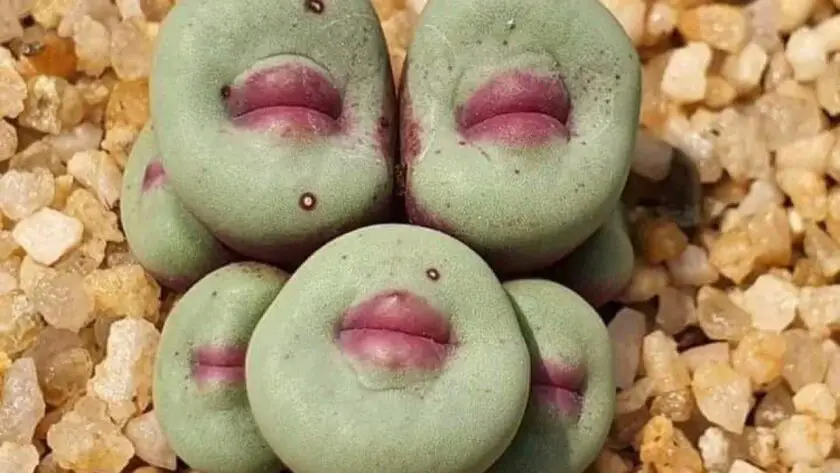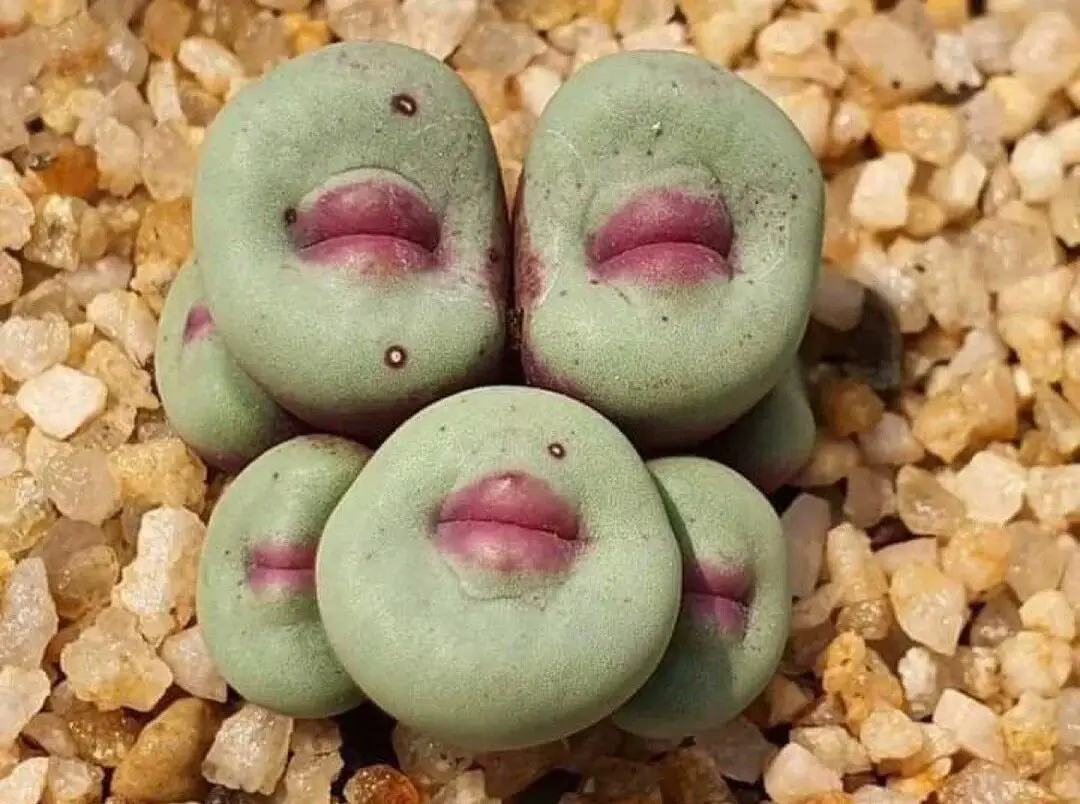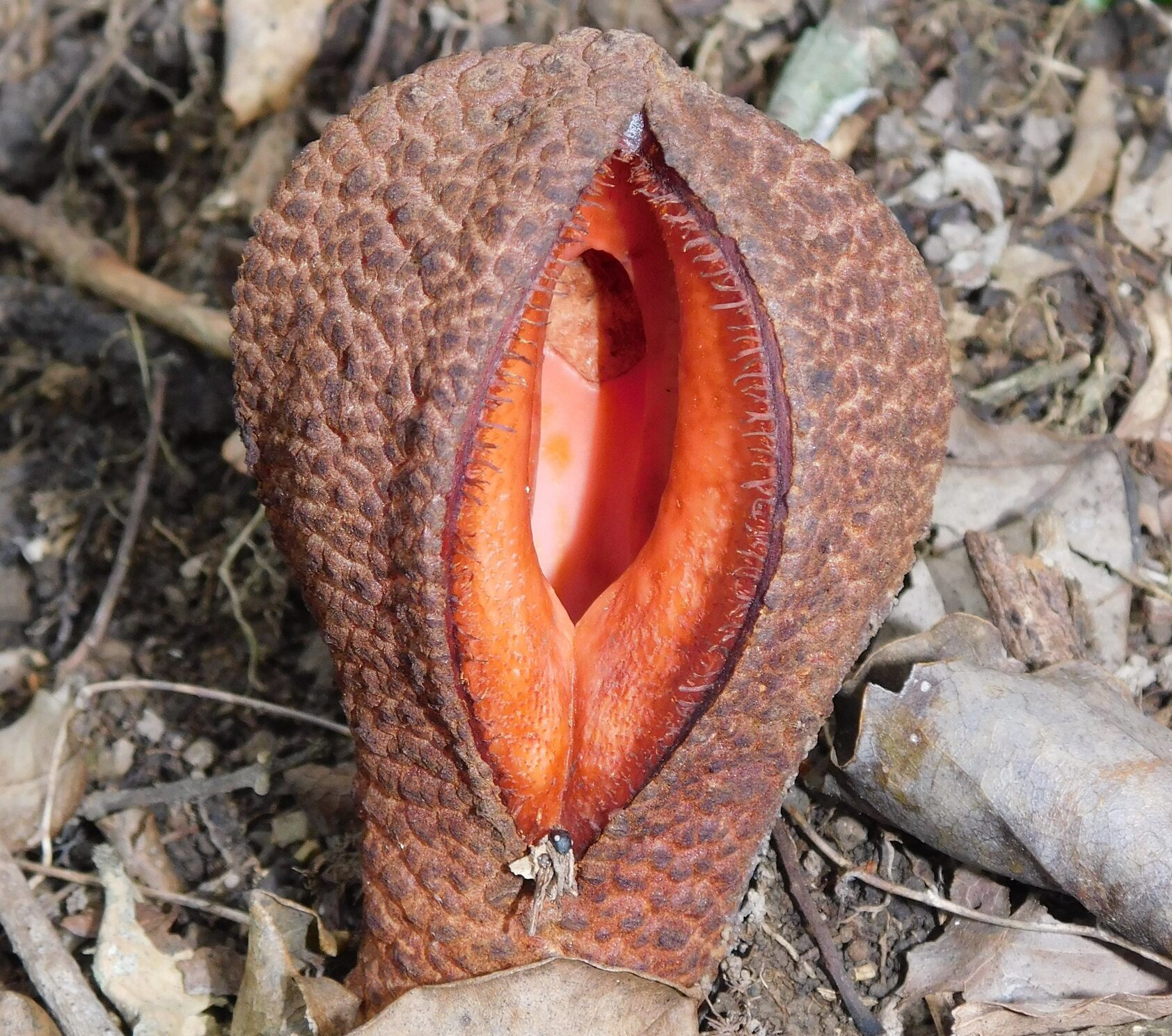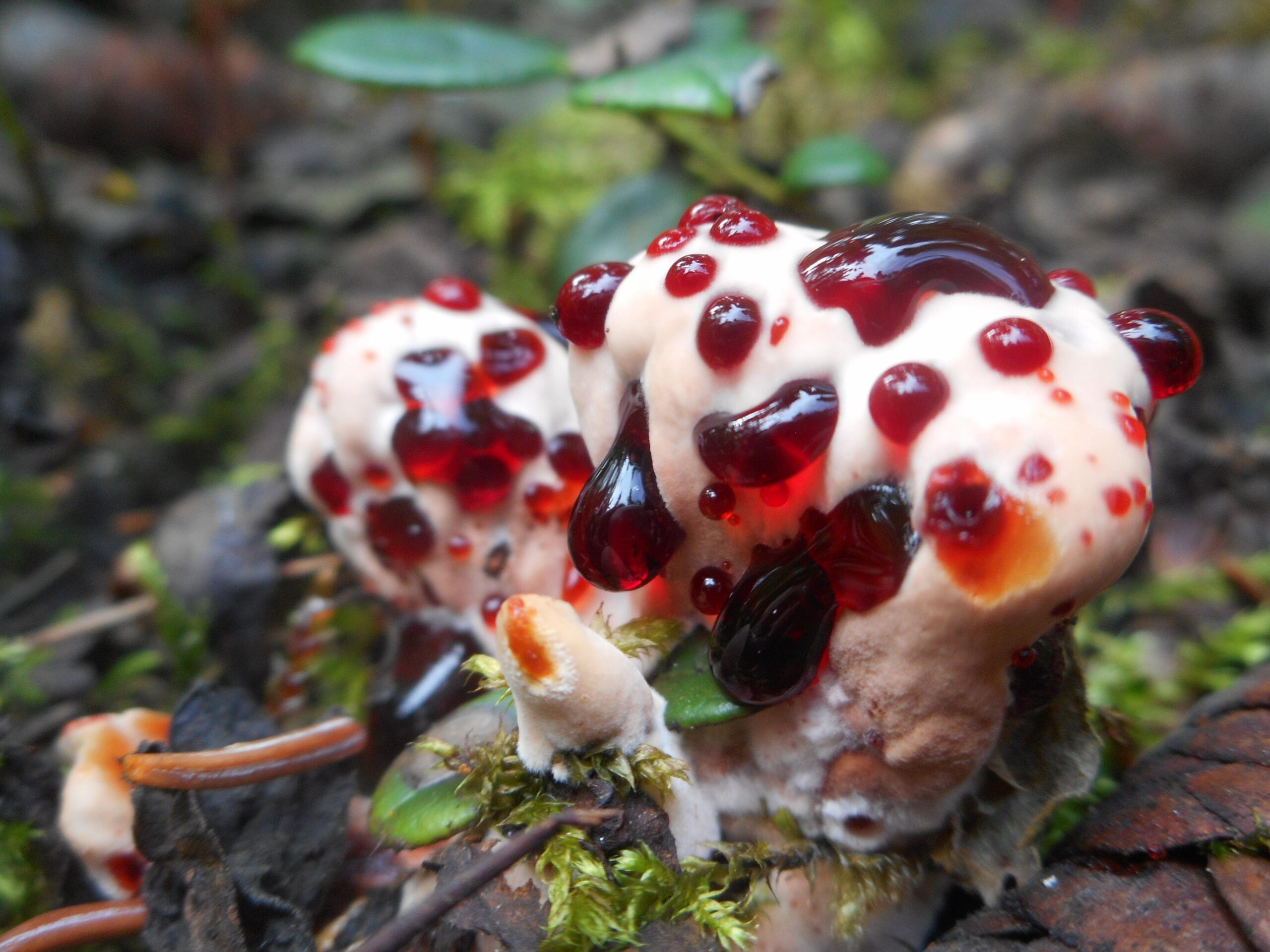Plants come in all shapes and sizes, and some have evolved to mimic the forms of the animals and humans that interact with them. Among these plants, there are some that take mimicry to a whole new level, resembling human body parts so convincingly that they can cause shock, disgust or amusement in those who come across them. From flowers that look like human lips to trees that resemble human legs, the world of botany is full of bizarre and fascinating examples of plant-human resemblance. In this article, we’ll take a closer look at some of the most notable and intriguing examples of plants that resemble human body parts.
Naked Man Orchid (Orchis Italica)
No prizes for guessing the reason behind this orchid species’ common name.
The Naked Man’s Orchid, also known as the Flower of Holy Spirit or Orchis italica, is a type of orchid that is native to the Mediterranean region and parts of the Middle East. The name “Naked Man’s Orchid” comes from the shape of its flowers, which resemble a naked man.
The orchid has a single stem that can grow up to 50 centimeters tall and bears a dense spike of up to 40 small flowers. The flowers are reddish-purple in color and have a unique shape, with two petal-like structures that look like arms and a long, pointed lip that resembles a head.
The Naked Man’s Orchid typically blooms in the spring, and its flowers have a pleasant, spicy fragrance. The plant prefers a well-draining soil and plenty of sunlight, but can also tolerate partial shade.
In some cultures, the Naked Man’s Orchid is considered to be a symbol of masculinity and fertility. It has been used in traditional medicine for a variety of purposes, including as a treatment for respiratory ailments, digestive issues, and even impotence.
While the Naked Man’s Orchid is not commonly cultivated as a houseplant, it can be grown in a greenhouse or outdoors in warm, Mediterranean climates. It is also sometimes grown as an ornamental plant in rock gardens or as a border plant in flower beds.
Conophytum
Conophytum is a genus of succulent plants that belong to the family Aizoaceae. The name “Conophytum” comes from the Greek words “konos,” which means cone, and “phyton,” which means plant, referring to the plants’ cone-shaped bodies. These plants are native to Southern Africa, particularly to the semi-arid regions of Namibia and South Africa.
Conophytum plants are small and typically grow to be only a few centimeters in height. They are adapted to survive in harsh, dry environments, and their bodies are often buried underground with only the upper surface exposed. The upper surface of the plant has a unique appearance, with a series of rounded, cone-shaped leaves arranged in pairs.
Conophytum plants are popular among succulent collectors because of their unusual appearance and their ability to grow in small spaces, such as in rock gardens or on windowsills. They are also prized for their attractive flowers, which range in color from white to pink, purple, and red.
In their natural habitat, Conophytum plants are important components of the local ecosystem, providing food and shelter for a variety of animals, including insects and rodents. However, many species of Conophytum are threatened by habitat loss and over-collection, and several are listed as endangered or critically endangered by the International Union for Conservation of Nature (IUCN).
Nepenthes holdenii
Nepenthes holdenii is a species of tropical pitcher plant native to the island of Borneo. It was named after Dr. Frank Holden, who collected the type specimen in 1893.
The plant is a climbing vine that can reach up to several meters in length. Its leaves are narrow and elongated, and can grow up to 40 centimeters in length. Like other Nepenthes species, N. holdenii has modified leaves that form pitchers, which are used to capture and digest insects and other small prey.
The pitchers of N. holdenii are relatively small, growing up to about 15 centimeters in height. They are generally yellowish-green in color with reddish-brown spots and stripes, and have a distinctive shape with a narrow waist and flared mouth. The upper part of the pitcher has a waxy surface that makes it slippery, causing insects to fall into the digestive fluid at the bottom of the pitcher.
Nepenthes holdenii is considered a rare and endangered species in the wild due to habitat loss and overcollection. It is listed as a vulnerable species on the IUCN Red List. In cultivation, it is grown by enthusiasts and collectors of carnivorous plants.
Psychotria Elata (Hot Lips)
Psychotria Elata, commonly known as “Hot Lips,” is a tropical plant species that is native to the rainforests of Central and South America. It is a member of the Rubiaceae family, which also includes coffee and gardenia plants.
The most distinctive feature of the Psychotria Elata plant is its unusual bright red bracts that look like a pair of lips. These bracts surround the plant’s small, inconspicuous flowers, which are typically white or pale yellow in color. The bracts are soft and velvety to the touch, and they grow up to 2 centimeters in length.
The Hot Lips plant typically grows to a height of around 1 meter and has glossy, dark green leaves that are about 20 centimeters in length. The plant prefers a humid environment with partial shade, and it thrives in the understory of tropical rainforests.
While the Hot Lips plant is primarily grown for ornamental purposes, it also has some medicinal uses. In traditional medicine, it has been used as a natural remedy for a variety of ailments, including fever, coughs, and stomach pains. The plant contains several active compounds, including alkaloids and flavonoids, which may contribute to its medicinal properties.
However, it’s important to note that the Hot Lips plant is not typically consumed for its medicinal benefits, as its active compounds can also be toxic in high doses. As such, it is primarily grown as an ornamental plant and admired for its unique and striking appearance.
Coco De Mer Nuts”
The coco de mer, or Lodoicea maldivica, is a palm tree species native to the islands of Seychelles in the Indian Ocean. It is famous for producing the largest and heaviest seeds of any plant in the world, which are often referred to as “double coconuts” or “coco de mer nuts”. The nuts are so large that they can weigh up to 30 kilograms and measure up to 1 meter in circumference.
While the seeds of the coco de mer are highly prized as collectibles due to their unusual size and shape, they are not edible. The kernel inside the seed is extremely hard and difficult to extract, and is also poisonous due to a high content of saponin, a natural detergent-like substance. Ingesting the kernel can cause severe digestive problems, and in some cases, even death.
Despite its inedibility, the coco de mer has been the subject of numerous legends and stories throughout history. In some cultures, it was believed to possess mystical and aphrodisiac properties, and was used in traditional medicine to treat various ailments. Today, the coco de mer is a protected species, and harvesting, buying, or selling the nuts without a permit is illegal.
Lamprocapnos Spectabilis (Bleeding Heart)
Lamprocapnos spectabilis, also known as bleeding heart, is a perennial flowering plant that is native to Asia. It is a member of the Papaveraceae family, which also includes poppies and fumitories. The plant is popular in gardens and is known for its distinctive heart-shaped flowers.
The bleeding heart plant typically grows to a height of around 60-120 centimeters and has lobed, light green leaves that are around 10-15 centimeters in length. The flowers are pendulous and heart-shaped, with a distinctive white or pink inner petal that hangs down like a drop of blood from the outer petal. The flowers appear in late spring to early summer and attract pollinators such as bees and butterflies.
Bleeding heart plants prefer partial shade and moist, well-drained soil. They are hardy and easy to care for, making them popular in gardens and landscaping. There are several cultivars available, with variations in flower color, size, and form.
While the bleeding heart plant is primarily grown for its ornamental value, it also has some medicinal uses. In traditional Chinese medicine, the plant has been used to treat various ailments, including menstrual cramps, heart disease, and digestive disorders. The plant contains several active compounds, including alkaloids and flavonoids, which may contribute to its medicinal properties.
However, it’s important to note that the bleeding heart plant is toxic if ingested in large quantities, and all parts of the plant are poisonous to humans and animals. As such, it should not be consumed or used without proper knowledge and precautions.
Hydnora
Hydnora is a genus of parasitic flowering plants that belongs to the family Hydnoraceae. These unusual plants are native to southern Africa, where they grow underground and parasitize the roots of other plants, particularly members of the Euphorbia and Acacia families.
Hydnora plants have a fleshy, globular, and partially subterranean body, which is typically brown or reddish-brown in color. The plant’s flowers are the most distinctive feature, emerging from the soil on a long, fleshy stalk. The flowers are large, up to 30 cm in diameter, and have a foul odor, which attracts their pollinators, carrion beetles, and dung beetles. The flowers have no petals, but instead have a series of fleshy, triangular lobes that resemble teeth.
Once pollinated, the flowers produce a fleshy, edible fruit, which is oval or round and can be up to 10 cm in diameter. The fruit is highly prized by some local communities, who use it as a food source.
Hydnora plants are highly adapted to their parasitic lifestyle, with modified roots that penetrate the roots of their host plants to obtain water and nutrients. However, their dependence on other plants for survival also makes them vulnerable to habitat loss and degradation.
Despite their unusual appearance and ecological importance, Hydnora plants are relatively unknown outside of their native range, and further research is needed to better understand their biology and conservation needs.
Auricularia Auricula
Auricularia auricula, also known as the jelly ear fungus, is a species of edible fungus that is native to Asia and can be found growing on dead and decaying wood. It is a member of the Auriculariaceae family and is widely consumed in Chinese cuisine, where it is valued for its crunchy texture and mild flavor.
The jelly ear fungus gets its name from its distinctive appearance, which resembles a floppy, ear-shaped disk. It has a rubbery, gelatinous texture when fresh and is often used in soups, stir-fries, and other dishes in Chinese cuisine. The fungus is also used in traditional Chinese medicine to treat a variety of ailments, including sore throats and high blood pressure.
In addition to its culinary and medicinal uses, the jelly ear fungus is also being studied for its potential as a source of bioactive compounds. Research has shown that the fungus contains several compounds with anti-inflammatory, antioxidant, and anti-tumor properties, which could have potential applications in the development of new drugs and therapies.
Overall, the jelly ear fungus is a fascinating and versatile fungus with a long history of use in both culinary and medicinal contexts. However, it’s important to note that there are several similar-looking species of fungus that are poisonous and should not be consumed. As such, it’s important to be sure of the identity of any fungi before consuming them.
Snapdragon
Snapdragon (Antirrhinum majus) is a herbaceous flowering plant native to Europe and North Africa, but it is widely cultivated all over the world as an ornamental plant. It belongs to the family Plantaginaceae and is known for its showy, brightly-colored flowers that resemble the face of a dragon.
Snapdragons grow as bushy, upright plants with a height of up to 3 feet (1 meter) and a spread of up to 1 foot (30 cm). The flowers, which bloom in early summer to early fall, are shaped like a dragon’s mouth and come in a wide range of colors, including pink, red, yellow, orange, and white. The flowers can be single or double-petaled, depending on the variety.
Snapdragons prefer full sun to partial shade and well-drained soil. They are often grown as annuals, but they can also be grown as perennials in areas with mild winters. The plants are easy to grow and are commonly used in garden beds, borders, and containers. They are also popular as cut flowers due to their long vase life.
In addition to its ornamental uses, snapdragon has been used in traditional medicine to treat a variety of ailments, including respiratory infections, digestive problems, and skin conditions. However, it is important to note that the plant can be toxic if ingested, and its use for medicinal purposes should be approached with caution.
Overall, snapdragon is a popular and versatile plant that is valued for its beautiful and unique flowers, as well as its potential medicinal properties.
Guarana
Guarana (Paullinia cupana) is a climbing shrub native to the Amazon basin in Brazil. It produces small, bright red fruit that contain seeds which are used to produce a highly caffeinated beverage. The seeds of guarana are about the size of a coffee bean, and they contain about twice the amount of caffeine as coffee beans.
Guarana has been used by indigenous tribes in the Amazon for centuries as a stimulant and medicine. It is believed to have a variety of health benefits, including improving mental clarity, reducing fatigue, and suppressing appetite. It is also used as a natural remedy for headaches, fever, and diarrhea.
In addition to its traditional uses, guarana is also used in a variety of modern products, including energy drinks, dietary supplements, and weight loss products. It is often added to these products for its stimulant effects and potential health benefits.
Guarana is considered safe when consumed in moderate amounts, but excessive consumption can lead to side effects such as insomnia, anxiety, and high blood pressure. It should also be avoided by pregnant and breastfeeding women and individuals with certain medical conditions.
Overall, guarana is a unique and potent plant that has a long history of traditional use and a growing popularity in modern products.
False Morels
False morels, also known as “poisonous morels”, are a group of mushrooms that are similar in appearance to true morels, but are not actually members of the Morchella genus. False morels belong to the Gyromitra genus, and they are known for their toxic properties.
While true morels are considered a prized culinary delicacy, false morels contain a toxin called gyromitrin, which can cause severe poisoning in humans. Symptoms of poisoning can include nausea, vomiting, dizziness, headache, and in severe cases, liver damage, kidney failure, and death.
False morels are often found growing in damp forests and woodland areas, and they typically have a wrinkled, brain-like cap with a distinct saddle-shaped indentation. Unlike true morels, the cap of false morels is not fully attached to the stem, and the stem is usually thicker and more robust.
Due to their toxicity, false morels should not be consumed under any circumstances. It is important to properly identify mushrooms before consuming them, and to seek medical attention immediately if symptoms of poisoning are experienced.
Bleeding Tooth Fungus
Bleeding tooth fungus, also known as Hydnellum peckii, is a type of fungus that is known for its distinctive appearance and unusual “bleeding” characteristic. It is found primarily in North America and Europe, and typically grows in damp, coniferous forests.
The fungus gets its name from the fact that its fruiting body, which resembles a tooth or a small, flattened mushroom, exudes a bright red, blood-like liquid when it is cut or damaged. This liquid is not actually blood, but a sap-like substance that is thought to help protect the fungus from insect and animal predators.
Bleeding tooth fungus is not considered toxic, but it is generally not consumed by humans due to its tough, rubbery texture and bitter taste. However, it is sometimes used in traditional medicine for its anti-inflammatory and pain-relieving properties.
While bleeding tooth fungus is not rare, it is not commonly encountered due to its small size and tendency to blend in with its surroundings. It is a fascinating and unusual species that is highly prized by mushroom enthusiasts and naturalists alike.
Lepiota boudieri is a species of mushroom that belongs to the Lepiota genus. It is also known by its common name “Boudier’s lepiota”.
The mushroom is found in Europe, Asia and North America, and typically grows in deciduous forests, meadows and pastures. It is a medium-sized mushroom, with a cap that can measure up to 12 cm in diameter. The cap is initially hemispherical, but flattens out with age, and is typically white to cream-colored with brownish scales. The gills are free, white and crowded. The stem is white and has a ring or skirt-like partial veil that is characteristic of the Lepiota genus.
Lepiota boudieri is edible, but caution must be exercised when collecting and consuming it, as it is very similar in appearance to other poisonous mushrooms in the Lepiota genus. The toxin in these mushrooms can cause severe gastrointestinal symptoms, such as vomiting, diarrhea and cramps, and in rare cases can even be fatal. As with all wild mushrooms, it is important to be able to accurately identify Lepiota boudieri before consuming it, and to only consume it in moderation.
Overall, Lepiota boudieri is a relatively common and easily recognizable mushroom that can be enjoyed as a culinary delicacy when collected and prepared properly.
Netted Rhodotus
Rhodotus palmatus, commonly known as the netted rhodotus or the rosy veincap, is a species of mushroom in the Physalacriaceae family. It is a saprophytic fungus that typically grows on decaying hardwood trees, stumps, and logs, particularly oak and beech trees.
The cap of the netted rhodotus mushroom can grow up to 15 cm in diameter and has a distinctive rosy pink or reddish-brown color with a net-like pattern of ridges and grooves. The cap is fleshy and convex when young, becoming flatter with age. The gills are decurrent, meaning they run down the length of the stem, and are a creamy pink color when young, eventually becoming rusty brown as the mushroom matures. The stem is typically 6-12 cm long and 2-3 cm wide, and has a reddish-brown color and a slightly hairy texture.
Netted rhodotus is considered an edible mushroom and is sometimes used in culinary dishes, although it is not as well-known or widely used as some other mushroom species. It is also sometimes used for medicinal purposes in traditional Chinese and Japanese medicine.
Overall, the netted rhodotus is a unique and visually striking mushroom that can be a fascinating find for mushroom hunters and nature enthusiasts.
Ascocoryne Sarcoides
(Purple Jellydisc Fungus)
Rhodotus palmatus, commonly known as the netted rhodotus or the rosy veincap, is a species of mushroom in the Physalacriaceae family. It is a saprophytic fungus that typically grows on decaying hardwood trees, stumps, and logs, particularly oak and beech trees.
The cap of the netted rhodotus mushroom can grow up to 15 cm in diameter and has a distinctive rosy pink or reddish-brown color with a net-like pattern of ridges and grooves. The cap is fleshy and convex when young, becoming flatter with age. The gills are decurrent, meaning they run down the length of the stem, and are a creamy pink color when young, eventually becoming rusty brown as the mushroom matures. The stem is typically 6-12 cm long and 2-3 cm wide, and has a reddish-brown color and a slightly hairy texture.
Netted rhodotus is considered an edible mushroom and is sometimes used in culinary dishes, although it is not as well-known or widely used as some other mushroom species. It is also sometimes used for medicinal purposes in traditional Chinese and Japanese medicine.
Overall, the netted rhodotus is a unique and visually striking mushroom that can be a fascinating find for mushroom hunters and nature enthusiasts.
When the jelly-like Ascocoryne sarcoides first grows on a dead deciduous log, it appears as spherical lobes. Later, it flattens into a saucer shape. As the fungi gather in clusters, they press against one another to form a rope-like mass, looking like a tiny person had spilled their small intestines onto the wood. The image is enhanced when the fleshy surface of their bodies are moistened by dew or rain.In its juvenile stage, the purple jellydisc is asexual, producing cloned conidia spores. Later, as it forms a mass that can stretch 20 centimeters (8 in) in length, it emits both asci (sex cells) and spores that sexually reproduce. It favors broadleaf trees—particularly the beech tree—in Britain, Ireland, continental Europe, and Australia. Despite its jelly-like appearance (it’s also called “purple jelly drops“), it does not have a distinctive odor or taste and is considered inedible.
Devil’s Fingers Mushroom
Devil’s fingers, also known as Clathrus archeri, is a type of fungus that belongs to the family Phallaceae. This mushroom is known for its unusual appearance, which resembles a hand with elongated fingers. The fungus is native to Australia and New Zealand but has since been introduced to other parts of the world, including Europe, North America, and Asia.
The Devil’s fingers mushroom typically emerges from a white, spherical egg-like structure, which then splits open to reveal the distinctive, finger-like arms. The arms are typically bright red or orange, and covered in a slimy, smelly substance known as gleba. The gleba attracts flies and other insects, which help to disperse the mushroom’s spores.
While Devil’s fingers mushrooms are not toxic, they are not considered edible due to their unpleasant odor and slimy texture. Additionally, the gleba can cause skin irritation, so it’s important to handle these mushrooms with care.
Overall, Devil’s fingers mushrooms are an interesting and unusual species of fungus that are sure to catch the eye of any nature enthusiast.
“Overall, the world of botany never ceases to amaze us with its diversity and peculiarities. From the towering trees of the Amazon rainforest to the smallest flowering plants in your backyard, there’s always something new to discover. Whether you find the idea of plants resembling human body parts amusing, fascinating, or downright creepy, there’s no denying that these species are a testament to the incredible creativity of nature. So the next time you’re out in nature, keep an eye out for these bizarrely shaped plants – who knows what else you might discover?”




















